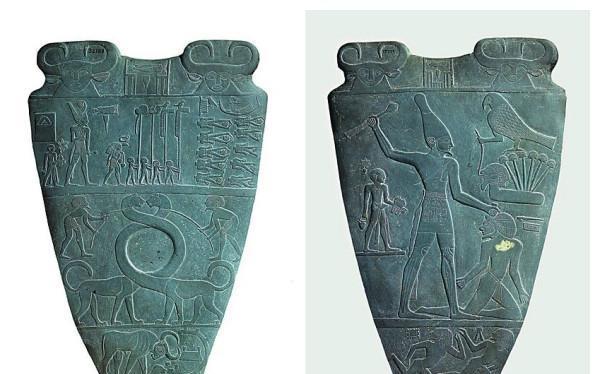For a long time, many people thought that the Egyptian hieroglyphs or the oracle bones of our country were the earliest writings in human history.
In 1890, a piece called a piece was discovered
“
Narmai Slate
”
The artifacts, which were dated to approximately the 31st century BC, contain the earliest hieroglyphs that can be found to date.
Accordingly
It is believed that around 3100 BC was the time when ancient Egypt formed a relatively complete hieroglyph.

And China's oracle bones, first discovered by the Qing Dynasty epigrapher Wang Yirong in 1899,
Its age dates back to BC
Around 1400.
But now there are also archaeologists who believe that
The oldest chinese script is not oracle bone, but pottery that appeared before the Xia Dynasty
For example, some undeveloped scripts found on the pottery of the Erlitou site and the Banpo site have not yet developed. They appeared in about 2500 BC.
However, because the number of pottery scripts appearing is not large enough, it is temporarily impossible to decipher, and it is relatively scattered, whether they are counted as writings is still controversial.
An ancient script that is now recognized, predates the emergence of ancient Egyptian hieroglyphs, oracle bones, and pottery scripts.
That is the cuneiform script created by the Sumerians of the ancient Two Rivers Valley.
The Two Rivers Basin is also known as
Mesopotamia
It is divided into two parts, known in the south as Babylonia. The southern part of Babylonia is called Sumeria.
As early as the mid-40th century BC, the Sumerians invented pictorial writing
The so-called picture text is to replace the "word" with "picture", for example, to write a "star" word, draw a "☆" on the ground. But it is clear that this kind of writing is far from the cuneiform script seen later.
Although the picture text is very easy to understand, but its randomness is large, some words are also very difficult to represent with pictures, which is not conducive to learning and dissemination. The use of a wedge pen to press out a certain fixed symbol is not only conducive to unifying symbols, but also conducive to improving efficiency.
The emergence of cuneiform is also related to the Sumerian counting system. The ancient Chinese used knotted ropes to record, while the Sumerians used small cones and small stones to press out a certain shape on the soil to indicate the quantity. Later, the Sumerians used this method to evolve into a triangular wedge-shaped stone pen to press out a certain text symbol on the clay plate, so it became a cuneiform script.
The method of writing is solved, and the material of writing is better solved. The ancient Sumerian region was an alluvial plain created by the "two rivers" and had an inexhaustible amount of clay.
The Sumerians made these clay tablets, wrote on them, and when the clay tablets were dry, they became "natural books". If the clay plate is calcined on a fire, it will be stronger.
Thus, in 3500 BC, the Sumerians developed a relatively mature writing system.
They consist of about 2,000 symbols, both musical and ideographic.
Most advancedly, the Sumerian cuneiform script is basically ideograph, and it is all characters, not simple pictures.
By the mid-20th century BC, cuneiform had developed into a common language in West Asia and Egypt, and even the Egyptian pharaohs used cuneiform scripts when communicating to The Kings of Western Asia, such as Babylon and Assyria.